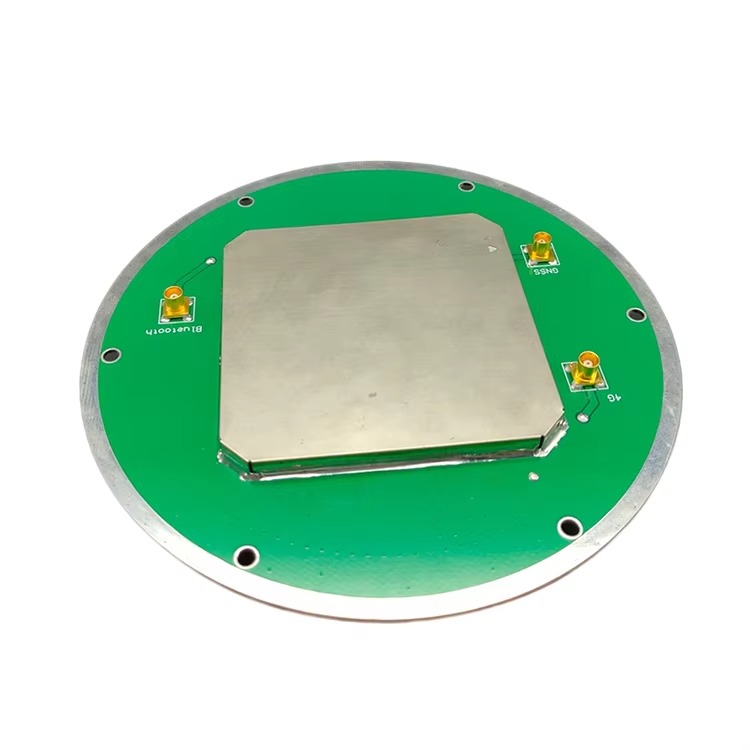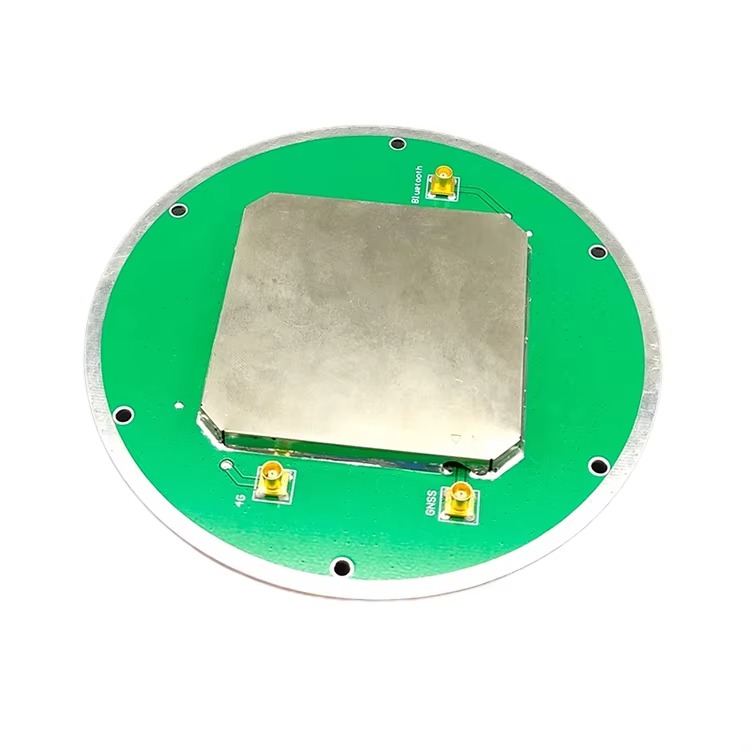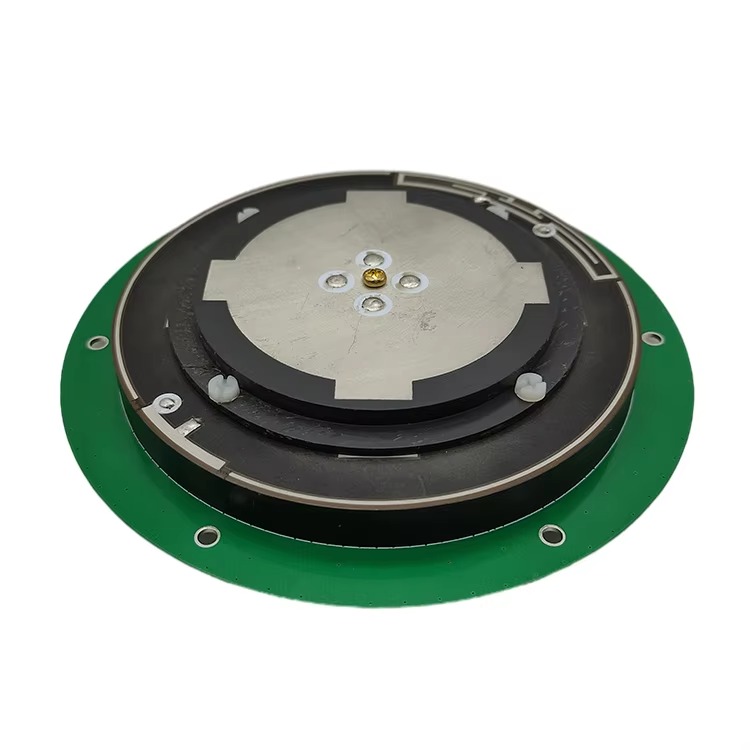As vehicle navigation and fleet management continue to evolve, so too will the technology that supports them. The TOXU RTK GNSS Antenna is at the forefront of this evolution, with ongoing innovations aimed at enhancing its performance, connectivity, and integration with emerging technologies. These advancements promise to further revolutionize precision positioning in vehicles, enabling new applications and improving the efficiency and safety of existing ones.
Integration with Autonomous Vehicles
The rise of autonomous vehicles is driving demand for even more precise and reliable positioning technology. Autonomous vehicles rely on RTK GNSS antennas to navigate safely and accurately, and future iterations of the TOXU antenna are likely to be optimized for this application. This could include enhanced signal processing algorithms to reduce latency, improved resistance to EMI from the vehicle’s autonomous systems, and integration with other sensors such as LiDAR and cameras to provide a comprehensive positioning solution.
For example, an autonomous delivery vehicle equipped with an advanced TOXU antenna could use RTK positioning to navigate to a customer’s Emerging Marine Industries: Enabling New Frontiers with RTK Precision
The influence of RTK Marine Antennas extends beyond traditional nautical surveying, reaching into emerging marine industries that are reshaping the way we interact with the ocean. These industries, driven by innovation and the need for sustainable resource utilization, rely heavily on precise positioning data to unlock new possibilities.
Deep-Sea Mining: Navigating the Depths with Accuracy
Deep-sea mining, which involves extracting valuable minerals such as polymetallic nodules, hydrothermal vents, and seafloor massive sulfides from the ocean floor, is an emerging industry with enormous potential. However, it presents unique challenges, including extreme water pressure, darkness, and remote locations far from shore. RTK Marine Antennas are indispensable here, providing the precise positioning required to guide mining equipment, map mining sites, and ensure compliance with environmental regulations.
Mining vessels equipped with RTK Marine Antennas can accurately position themselves above mining zones, ensuring that remotely operated vehicles (ROVs) and mining robots are deployed to the exact coordinates. This precision minimizes the risk of damaging surrounding ecosystems and ensures that mining operations are efficient and targeted. Additionally, the antenna’s ability to operate in remote areas, far from terrestrial base stations, is crucial for deep-sea mining, which often occurs in the middle of oceans. With enhanced connectivity through future beyond 5G technologies, these antennas will enable real-time monitoring and control of mining operations, even in the most isolated regions.
Marine Renewable Energy: Optimizing Offshore Installations
The growth of marine renewable energy, including offshore wind farms, tidal energy, and wave energy, is a key component of the global transition to clean energy. These installations require precise positioning during construction, operation, and maintenance to maximize energy output and ensure safety. RTK Marine Antennas play a vital role in this process.
For offshore wind farms, RTK Marine Antennas are used to position wind turbine foundations with centimeter-level accuracy, ensuring that they are placed in optimal locations to capture wind energy. During installation, the antennas guide cranes and installation vessels, ensuring that turbines are assembled correctly and securely. Once operational, the antennas enable precise monitoring of turbine positions, detecting any movement or shifting that could affect performance or safety. Similarly, for tidal and wave energy devices, which are often deployed in dynamic coastal environments, RTK Marine Antennas provide the positioning data needed to optimize their placement and operation, maximizing energy generation.
Contributing to Global Maritime Sustainability
In addition to enabling new industries, RTK Marine Antennas are playing a crucial role in promoting global maritime sustainability. By providing accurate data on marine ecosystems, resource utilization, and vessel movements, they support efforts to protect the ocean and ensure its long-term health.
Sustainable Fisheries Management: Preventing Overfishing
Overfishing is a major threat to marine biodiversity and the livelihoods of millions of people who depend on fisheries. RTK Marine Antennas are helping to address this issue by enabling precise tracking of fishing vessels, ensuring that they operate within designated fishing zones and comply with catch limits.
Fisheries management authorities can use data from RTK Marine Antennas to monitor vessel movements in real time, detecting and preventing illegal, unreported, and unregulated (IUU) fishing. The antenna’s high accuracy allows authorities to pinpoint the exact location of vessels, ensuring that they do not enter protected areas or exceed fishing quotas. This level of monitoring promotes sustainable fishing practices, preserving fish stocks and maintaining the balance of marine ecosystems.
Coastal Zone Management: Protecting Vulnerable Shorelines
Coastal zones are among the most ecologically diverse and economically important areas on Earth, but they are also highly vulnerable to climate change, erosion, and human development. RTK Marine Antennas are essential for effective coastal zone management, providing the data needed to map coastal features, monitor erosion, and plan sustainable development.
By accurately mapping coastal areas, including beaches, dunes, and wetlands, RTK Marine Antennas enable scientists and planners to identify vulnerable regions and develop strategies to protect them. For example, the antennas can track changes in shoreline positions over time, helping to predict and mitigate the effects of sea-level rise. They also support the design and placement of coastal protection structures, such as seawalls and breakwaters, ensuring that they are effective and minimally disruptive to the environment.
Conclusion: A Continuing Legacy of Innovation in Marine Positioning
The RTK Marine Antenna has already transformed nautical surveying and marine operations, and its influence continues to grow as new industries emerge and sustainability becomes an increasingly important global priority. From deep-sea mining to marine renewable energy, and from sustainable fisheries to coastal zone management, these antennas are enabling us to explore, utilize, and protect the ocean in ways that were previously unimaginable.
As technology continues to advance, we can expect RTK Marine Antennas to become even more precise, reliable, and versatile. With integration into AI and machine learning systems, miniaturization for autonomous vehicles, enhanced connectivity through next-generation networks, and improved durability, they will continue to push the boundaries of what is possible in marine positioning.
In a world where the ocean is critical to our survival and prosperity, the RTK Marine Antenna stands as a powerful tool for unlocking its potential while ensuring its preservation. It is a testament to human ingenuity and our ability to harness technology to address the challenges of the marine environment, paving the way for a more sustainable and prosperous future.




































































 Language
Language
 En
En Cn
Cn Korean
Korean

 Home >
Home > 







 18665803017 (Macro)
18665803017 (Macro)













